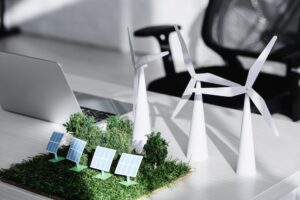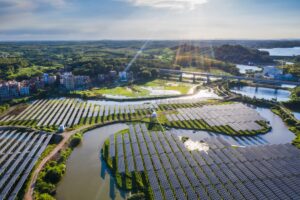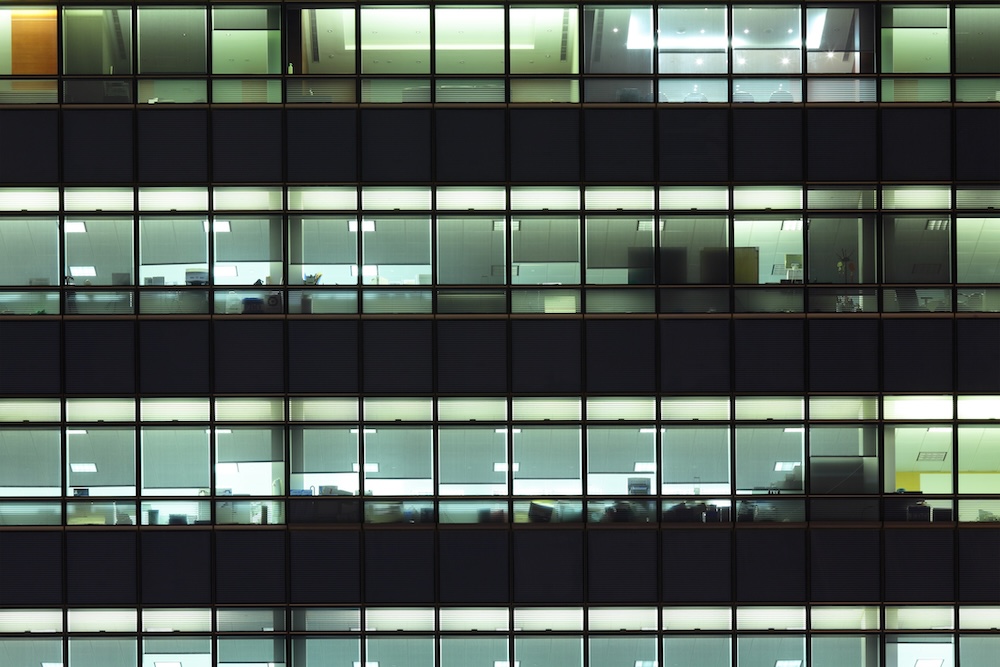As companies call workers back to the office, one of the arguments is energy efficiency — the idea that it’s more “green” to centralize people in one climate-controlled building than to have them using heat, air conditioning, and electricity at home.
But is that really true?
Let’s break it down: energy use, carbon emissions, and resource consumption of commercial office spaces vs. home offices — and what the data actually says about which is better for the planet.
Office Buildings: High Energy, Big Footprint
Commercial office buildings are designed for scale — and they consume resources accordingly.
According to the U.S. Energy Information Administration (EIA):
- Office buildings use more electricity than any other commercial building type in the U.S.
- Lighting, HVAC (heating, ventilation, air conditioning), and equipment account for over 70% of total energy use
- Central systems are often left running nights and weekends, regardless of occupancy
Other hidden energy costs include:
- Elevators, digital signage, automatic doors
- Refrigerators, coffee machines, servers, and printers
- Outdoor lighting and security systems
Many offices operate on outdated infrastructure with poor insulation, inefficient lighting, and high HVAC demands — particularly in high-rise buildings where internal climate control is difficult to regulate floor-by-floor.
Home Offices: Smaller Footprint, More Control
In contrast, working from home typically involves:
- Heating or cooling only one area of the home
- Using laptops instead of full desktop setups
- Turning off lights and devices when not in use
- Relying on energy-efficient home appliances
Remote workers can:
- Open a window instead of turning on the AC
- Use natural light during the day
- Brew a pot of coffee instead of powering multiple machines
- Plug into solar or green energy plans, if available
The average home office setup — laptop, LED light, and modem/router — consumes far less energy than even a single desk in a commercial building.
Heating and Cooling: Where Offices Lose Efficiency
One of the biggest differences comes down to climate control.
In an office building:
- HVAC systems often heat/cool the entire floor or building, not just occupied areas
- Air circulation is constant, even if workers are out for lunch or in meetings
- Systems run early and late to prepare for workers’ arrival and departure
At home:
- You can heat or cool only the room you’re in
- Smart thermostats adjust temperature based on presence
- You can layer clothing or use a fan instead of running the system all day
A 2022 study by the International Energy Agency (IEA) found that remote work can cut heating energy use by 20–30% per household — particularly when workers optimize their usage.
Lighting: Less Is More at Home
Office buildings light up hundreds or thousands of square feet, including:
- Hallways, stairwells, restrooms, and break rooms
- Lobby areas, unused meeting rooms, and empty cubicles
- Exterior signage and garage lighting
These lights are often left on continuously or automated on rigid timers.
By comparison, home workers typically use:
- A single overhead light or desk lamp
- Natural daylight, especially near windows
- Task lighting instead of whole-room illumination
LED bulbs, dimmers, and occupancy sensors are more common in homes, making energy use more efficient per person.
Equipment and IT Infrastructure
In the office:
- Printers, servers, routers, and monitors run constantly
- Shared equipment stays on whether in use or not
- Larger network infrastructure demands consistent power
At home:
- Fewer devices are plugged in
- Wi-Fi routers and laptops consume far less energy
- Workers have more incentive to unplug or shut down devices when not in use
The average office worker’s energy consumption in-office is roughly 2 to 3 times higher than at home — primarily due to overhead infrastructure and idle energy draw.
What About Shared Spaces?
A common rebuttal is: “If everyone is at home, aren’t we using more energy overall?”
Not necessarily.
- Many homes already run heating or cooling regardless of work — people stagger schedules, have kids or pets at home, or work flexible hours
- Office buildings often remain fully powered even when occupancy is partial
- Shared spaces like kitchens and break rooms still use energy even when not in use
In hybrid models, companies often maintain fully operational buildings even if workers only come in 2–3 days per week — meaning duplicated energy costs across both work and home settings.
Remote Work + Smart Homes = Sustainability Win
Homes are becoming increasingly energy-smart:
- Smart thermostats like Nest and Ecobee lower usage during inactive hours
- LED lighting and solar panel adoption are on the rise
- Appliances with Energy Star ratings reduce power draw
Combine that with remote work, and the opportunity for efficiency is massive.
Bonus: remote work allows people to relocate closer to family, to nature, or to cities with lower energy demand — potentially reducing their carbon footprint long-term.
Rethinking What “Efficiency” Really Means
Efficiency isn’t just about total square footage or centralized heating.
It’s about:
- Using energy only when needed
- Designing systems for flexibility, not full capacity
- Empowering individuals to make low-impact decisions
Remote work offers all of these — while many office systems are locked into wasteful routines.
Final Thoughts: Centralized Energy ≠ Better Energy
The myth that office work is inherently more efficient doesn’t hold up under scrutiny.
Office buildings use far more electricity, require constant climate control, and rely on aging infrastructure that’s rarely optimized for energy savings.
Working from home isn’t perfect — but it gives people agency. It encourages mindful energy use, flexible design, and sustainable living.
As we debate the future of work, we need to include environmental impact in the conversation.
Because it’s not just about productivity — it’s about power.
And remote work uses less of it.









Reader Interactions